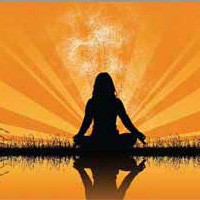Indian Wellness Pursuits
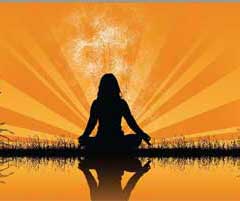 YOGA
YOGA
Yoga is a practice that uses posture and breathing techniques to induce mental relaxation and improve the immunity system. It is the reunion of the self with divine power. Yoga looks into the root causes of every disease and works towards eliminating those symptoms from our system. According to yogic philosophy, a physical disease, pain or complication is the result of various factors that directly or indirectly affect one’s well being. The best way to remedy health problems is to work on all those areas simultaneously. It is never about one organ system. No matter what the physical problem, it is always about the whole body system.
Wonders of Yoga
The practice of yoga has proven scientific and medical benefits and is believed to have the ability to fight chronic diseases.
A few health benefits of yoga include:
• Eliminates toxins and toxic conditions from your body and mind.
• Restores your constitutional balance improving health and wellness.
• Decreases muscle tension by improving flexibility.
• Strengthens your immune system to become more resistant to illness.
• Reduces anxiety attacks by lowering the levels of blood lactate. Reverse the negative effects of stress • on your body and mind thereby slowing the aging process.
• Increases serotonin production which influences mood and behaviour. Low levels of serotonin are associated with depression, obesity, insomnia and headaches.
• Enhances your self-reliance, strength, energy, vitality and mental clarity.
• Brings about deep relaxation and sense of well-being.
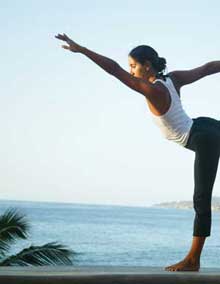 Pranayama or breathing techniques
Pranayama or breathing techniques
Pranayamas are yogic breathing exercises that utilize breathing to influence the flow of prana (vital energy) in the nadis (energy channels) of the body. Pranayama (breathing technique) abates carbon dioxide content and revitalizes the body ensuring long-term health benefits. In pranayama practices, four important aspects of breathing are utilised: (a) Pooraka or inhalation; (b) Rechaka or exhalation; (c) Antar Kumbhaka or internal breath retention; and (d) Bahir Kumbhaka or external retention. Different pranayamas involve various techniques, which utilize these four aspects of breathing and do wonders for the human body and system.
Meditation & Yoga
Meditation is an important aspect of yoga. This helps the practitioner develop an insight to his spiritual existence and improves his emotional and mental faculty. Meditation is known to have several health benefits. It enhances the immune system. Research has revealed that meditation increases activity of ‘natural-killer cells,’ which kill bacteria and cancer cells. It also reduces the activity of viruses, emotional distress and helps in post-operative healing.
Types of Yoga
Because of its holistic benefits, different yoga practitioners seek different benefits – some work on improving their physical state, some want to stable their emotional state, some wish to enhance their mental faculty and many seek spiritual solace. Thus, there are different types of yoga. Unlike the more gentle forms like hatha yoga, ashtanga yoga, power yoga, vinyasa yoga, and Bikram yoga are the more rigorous and athletic that require you to keep your body in constant motion between poses, resulting in a strenuous cardiovascular workout and improved core strength. Hatha yoga relieves chronic back and neck pain, since the poses and postures gently stretch and strengthen your back and neck muscles. Kundalini yoga is one of the most sought-after yoga forms in the West. It is based on the physiology of the ‘subtle body,’ according to which there are seven major centers of psychic energy, called chakras, located along the spinal column.
Yoga should ideally be practiced under the guidance of a Yoga teacher.
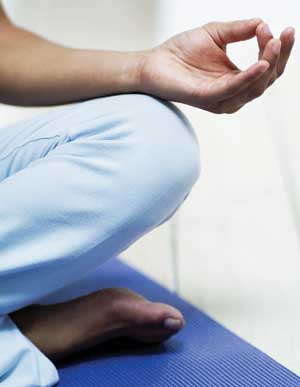 AYURVEDA
AYURVEDA
Complicated surgeries can be done without anesthesia and with the help of natural herbs and oil massages. Sounds incredible? Ayurveda, a science of natural healing, corroborates the statement with numerous success stories. Ayurveda is the oldest known form of health care in the world. A person can be cured of his or her ailments by the application of natural herbs, oils, massage techniques and the like. It also involves modifying one’s diet and eliminating that which does not suit the most active element in your body. These elements (space, air, fire, water, and earth) are called doshas. Ayurvedic treatment for every problem depends on an individual’s dosha-imbalance system of the body. The science believes in understanding the individual’s ‘biological makeup,’ and then treating the person accordingly. It maintains that all life must be supported by balanced energy. When there is minimal stress and the flow of energy within a person is balanced, the body’s natural defense systems will be strong and can more easily defend against disease. Using natural herbs and minerals in the refined form to treat various illnesses, there are no side effects and the medication is completely safe.
Panchkarma
Panchakarma, a unique fivefold Ayurvedic therapy, helps in reversing the negative effects of daily living. It can restore one’s natural state of health and wellness by cleansing the body of toxins, bringing balance into one’s system, improving bodily functions. Quite simple as the panchakarma therapeutic process appears, its effects are powerful and effective. Kerala in India is famous for its panchakarma treatments.
NATUROPATHY
There is only one disease – the accumulation of toxic waste in the body. And there is only one cure – assisting the body in removing the toxins. This is the underlying principle of naturopathy which banks on fasting, diet control, hydrotherapy and other non-drug treatments. Naturopathy treatment is based on the principle of rediscovering inner strength of the body in order to make the body strong enough to retract various diseases. A naturopath’s role is to activate the inbuilt power of healing within the body by following certain simple doctrines. Naturopathy claims that this not only cures the disease but also improves the body’s immunity system. The medicines used in this Indian line of treatment are made of natural herbs, plants, foods, leaves, and roots and don’t have any side effects.
Naturopathy runs on the following philosophies:
• Nature cure is synonymous with nature care.
• The accumulation of toxins or too much acidity in the blood is the main cause of any disease.
• It is not bacteria but morbid matter in the body that enables bacterial growth that needs to be checked in the body.
• The body has its own healing system. All diseases are but methods of the body to clean itself. The body must be allowed its self-healing process. It should not be suppressed by use of drugs.
• Food, correctly used, is medicine
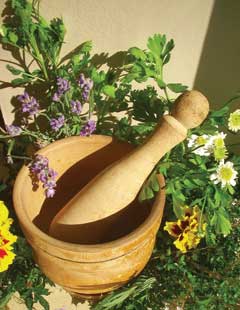 DIET & NUTRITION.
DIET & NUTRITION.
Indian wellness techniques place special emphasis on what one eats and how. The following tips on healthy eating are simple and yet very effective. (If you are under the supervision of a doctor, check with her/him if the given suggestions are suited for your current health condition.)
• Eat only when genuinely hungry and when your last meal is fully digested (about 3-6 hours after a main meal).
• Eat in a quiet and relaxed atmosphere. While eating you should not read, work or watch television. Always sit down to eat.
• Do not over eat. After eating, the stomach should be only up to 3/4 full.
• Sit quietly for 5-10 minutes at the end of each meal.
• Lunch should be the main meal of the day.
• In the evening avoid heavy foods such as meat, fish, yogurt, cheese, buttermilk and fromage frais.
• Try to be regular in your meal times. Eat at the same times each day.
• Avoid eating between meals. Instead drink hot water, or if necessary eat ripe sweet fruit.
• Food should be freshly prepared; it should be wholesome and should taste good. Avoid reheated or stale food.
• Include all six tastes in each meal: sweet, sour, salty, pungent, bitter, and astringent. The tastes also have their own influence on the subtle inner balance of the physiology.
• During meals, you may sip liquids such as water or juice. Do not drink a lot and avoid ice-cold drinks as they dampen down the digestive processes.
• Milk should not be drunk with the main meal. It can be taken alone or with a light meal of sweet tasting foods (e.g. toast, cereals etc). Minimize food of other tastes.
• Indian wellness ideologies are gaining steady momentum in India and abroad because of their long-term and holistic health benefits.

